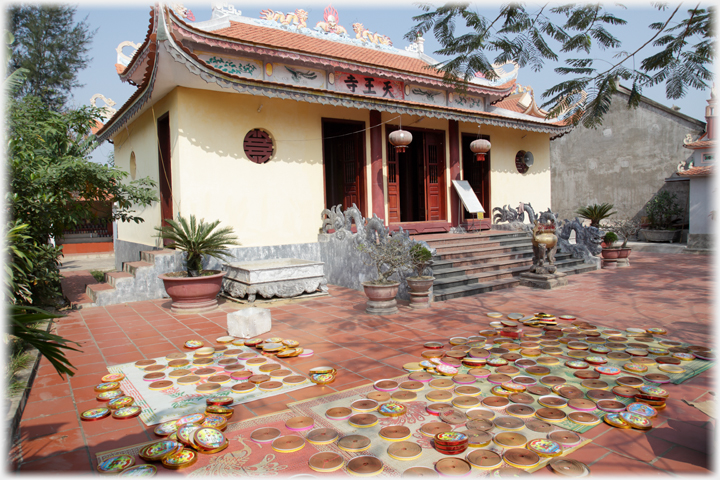 The Khánh Pagoda, as it is known locally, with its courtyard covered in incense coils lying in the sun to dry. If lifted from the centre these become spirals as seen in the
An Các Pagoda.
(Right-hand top picture in the blue vase.) They burn for extremely long periods - up to two days
The temples and pagodas of Vietnam do not assail you as they do in Laos or Thailand, they are nevertheless surprisingly ubiquitous. The surprise is not least beacuse Vietnam is a very secular country. Their ubiquity is complicated by a puzzle presented to foreigners, for we meet both 'temples' (Đền) and 'pagodas' (Chùa). The word pagoda is used as the translation for Buddhist centres, while a temple denotes a building in honour of a famous person, possibly semi-mythical, but often modern, such as Hồ Chí Minh. This page has some examples, from the district of Tĩnh Gia, of buildings that describe themselves as temples, but also of establishments which are not clearly one or the other. Starting with the Khánh Pagoda, as it is locally known. Below is its name plate, so you can see that officially it is both a temple and a pagoda.
The Khánh Pagoda, as it is known locally, with its courtyard covered in incense coils lying in the sun to dry. If lifted from the centre these become spirals as seen in the
An Các Pagoda.
(Right-hand top picture in the blue vase.) They burn for extremely long periods - up to two days
The temples and pagodas of Vietnam do not assail you as they do in Laos or Thailand, they are nevertheless surprisingly ubiquitous. The surprise is not least beacuse Vietnam is a very secular country. Their ubiquity is complicated by a puzzle presented to foreigners, for we meet both 'temples' (Đền) and 'pagodas' (Chùa). The word pagoda is used as the translation for Buddhist centres, while a temple denotes a building in honour of a famous person, possibly semi-mythical, but often modern, such as Hồ Chí Minh. This page has some examples, from the district of Tĩnh Gia, of buildings that describe themselves as temples, but also of establishments which are not clearly one or the other. Starting with the Khánh Pagoda, as it is locally known. Below is its name plate, so you can see that officially it is both a temple and a pagoda.
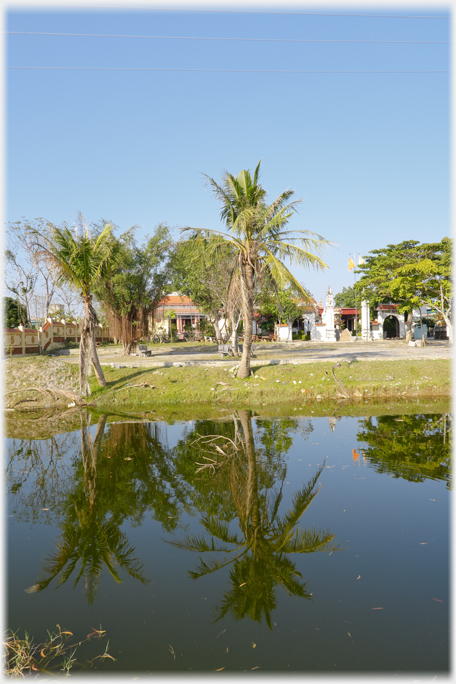 The Khánh Pagoda sits beside a backwater of the River Lạch Bạng, a little upstream of
Hải Thanh
and about four kilometres south of Tĩnh Gia in Thanh Hoá Province, Vietnam
The Khánh Pagoda sits beside a backwater of the River Lạch Bạng, a little upstream of
Hải Thanh
and about four kilometres south of Tĩnh Gia in Thanh Hoá Province, Vietnam
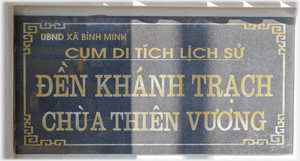 By the entrance to the pagoda a plaque announces: 'The Peoples' Committee of Bình Minh [Local district]. Historic Buildings. Khánh Trạch Temple. Thiên Vương Pagoda'
By the entrance to the pagoda a plaque announces: 'The Peoples' Committee of Bình Minh [Local district]. Historic Buildings. Khánh Trạch Temple. Thiên Vương Pagoda'
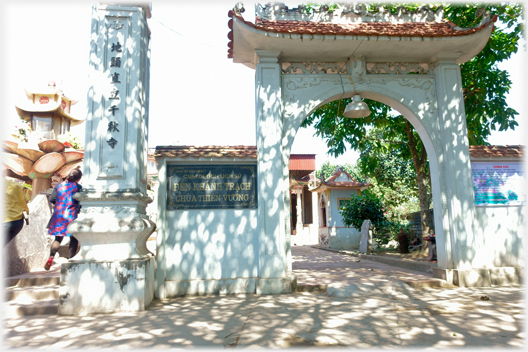 The entrance gate to the Khánh Pagoda, with the name plaque, here hiding in dappled shadows
The entrance gate to the Khánh Pagoda, with the name plaque, here hiding in dappled shadows
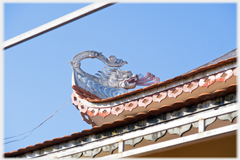 Roof dragons
protect buildings...
Roof dragons
protect buildings...
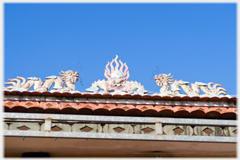 ...such as pagodas and temples, as well as palaces
...such as pagodas and temples, as well as palaces
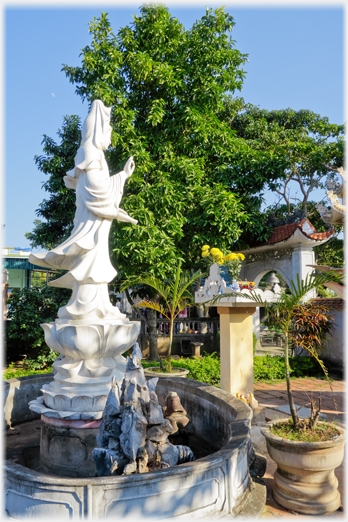 The courtyard Buddha...
The courtyard Buddha...
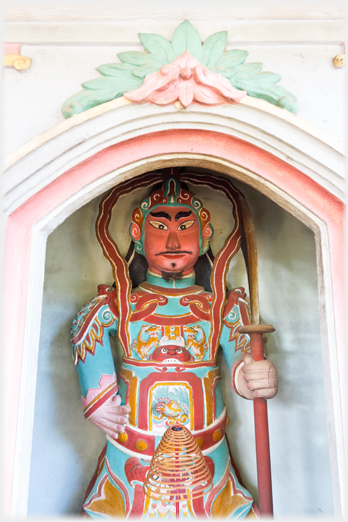 ...and a courtyard guardian
...and a courtyard guardian
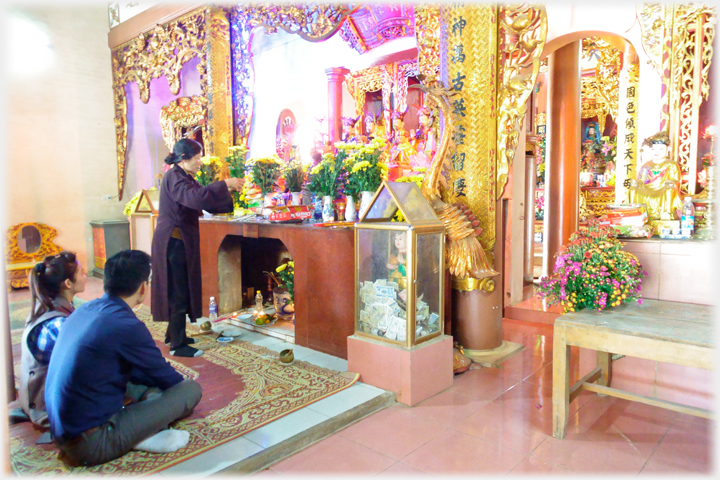 A pagoda assistant helps with the presentation of offerings at an outer altar
A pagoda assistant helps with the presentation of offerings at an outer altar
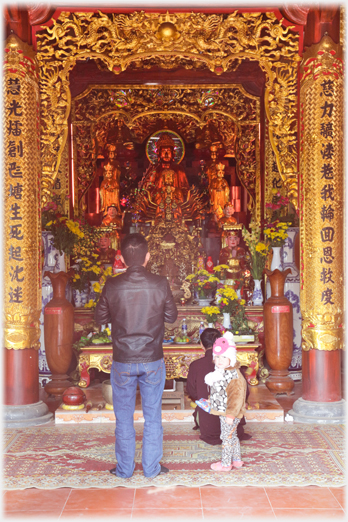
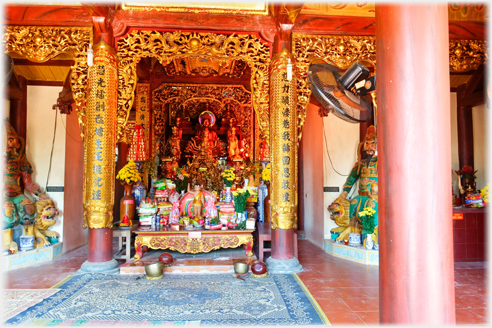
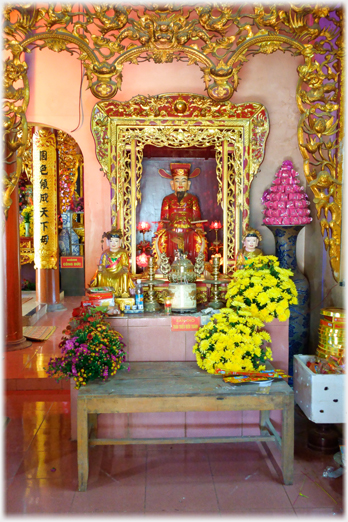 Three images of the main altar. Maybe unstinting is the best word for the use of red and gold. And to the right, a side altar.
Three images of the main altar. Maybe unstinting is the best word for the use of red and gold. And to the right, a side altar.
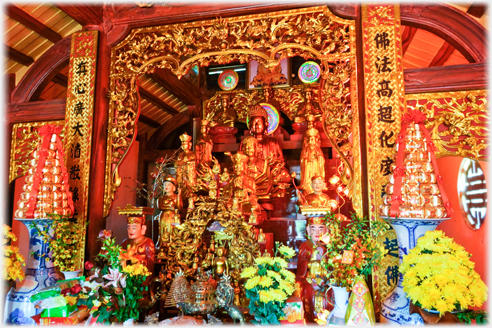
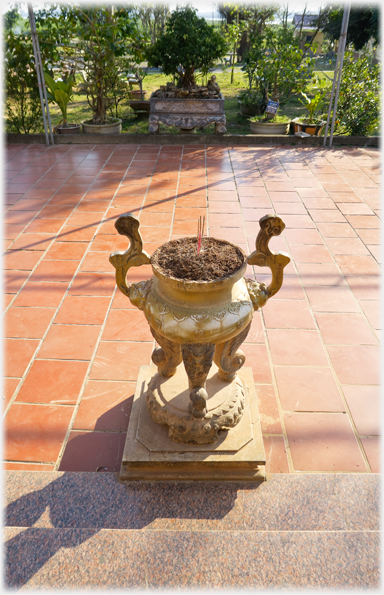 After the extravagant use of gold and red inside the building, this urn, with its sand to hold offerings of incense sticks, seems restrained by comparison
After the extravagant use of gold and red inside the building, this urn, with its sand to hold offerings of incense sticks, seems restrained by comparison
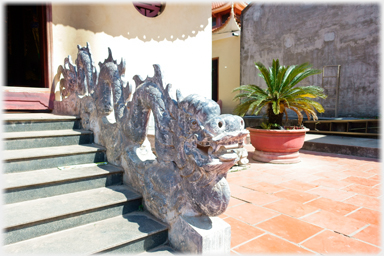 From roof to ground dragons adorn pagodas. They are commonly used to
form balustrades
From roof to ground dragons adorn pagodas. They are commonly used to
form balustrades
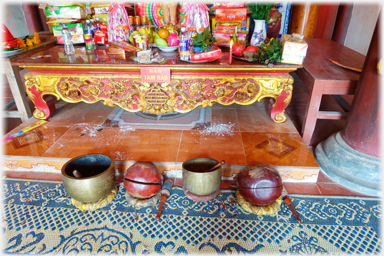 Intriguingly these appear to be either 'singing bowls' or pestles and mortars! The sign says that the altar is dedicated to the 'three treasures' of Buddhism
Intriguingly these appear to be either 'singing bowls' or pestles and mortars! The sign says that the altar is dedicated to the 'three treasures' of Buddhism
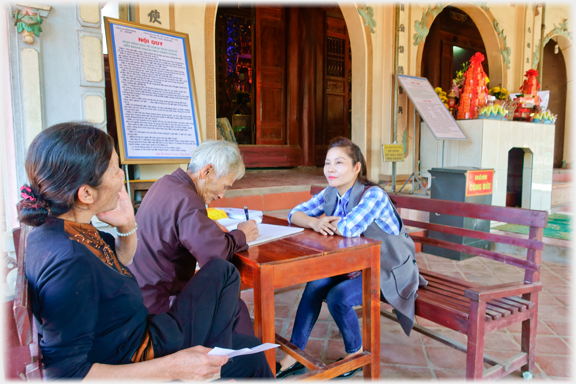 Donations and offerings are received and recorded. A stone plaque in the grounds shows financial donations for the years 2005/7 given to the pagoda from social groups and families...
Donations and offerings are received and recorded. A stone plaque in the grounds shows financial donations for the years 2005/7 given to the pagoda from social groups and families...
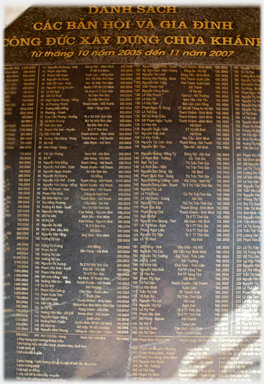 ...these are largely modest gifts, the cost of breakfast for three people, but writ in stone
Below photographs taken in the area of Tĩnh Gia of three 'temples' - therefore dedicated to people.
...these are largely modest gifts, the cost of breakfast for three people, but writ in stone
Below photographs taken in the area of Tĩnh Gia of three 'temples' - therefore dedicated to people.
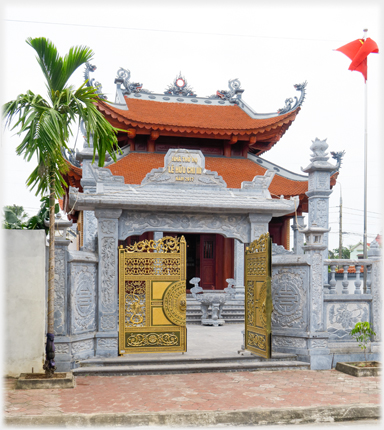
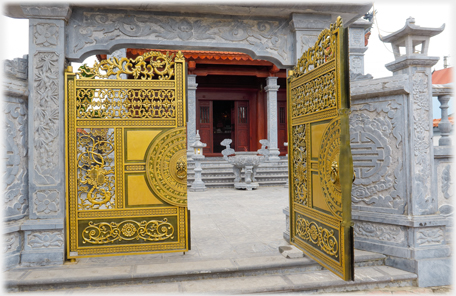 Left and above, the rather imposing gates of the
Left and above, the rather imposing gates of the
Lê Hữu Chi III temple which lies in the
new suburb to the south of Tĩnh Gia
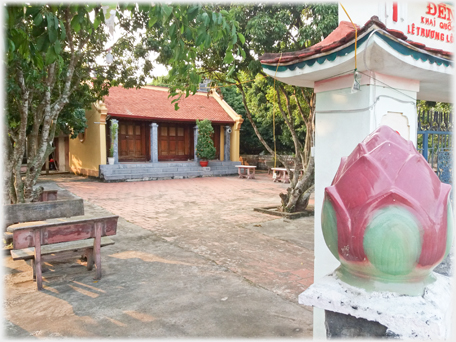 Below and right, this little temple - Đềnn Thờ - is well tucked away from any thoroughfare, although its dedication above the gate is to no less than Lê Trương Lơi, the founder of the state
Below and right, this little temple - Đềnn Thờ - is well tucked away from any thoroughfare, although its dedication above the gate is to no less than Lê Trương Lơi, the founder of the state
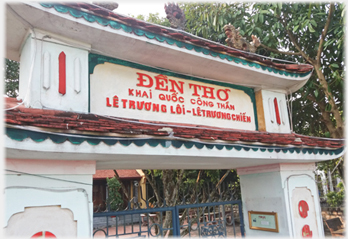
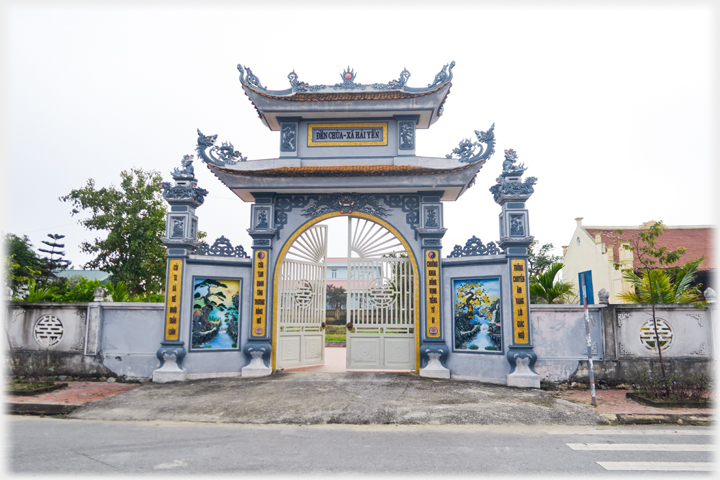 And here the building is dedicated to both secular and non-secular remembrance. The Xã Hải Yến is another new development, having been completed in the last 10 years
And here the building is dedicated to both secular and non-secular remembrance. The Xã Hải Yến is another new development, having been completed in the last 10 years
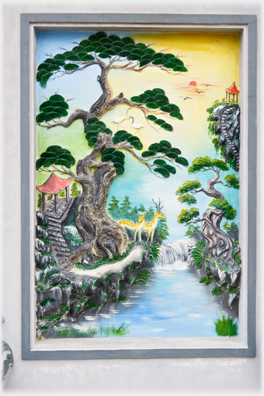 Traditional classical motifs at the...
Traditional classical motifs at the...
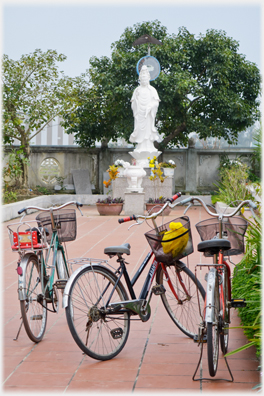 Bicycles parked in the courtyard
Bicycles parked in the courtyard
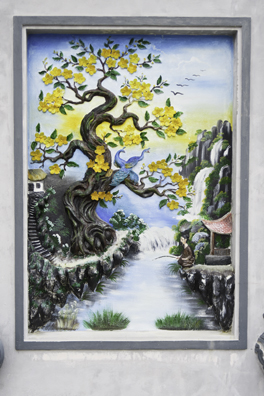 ...gate, given a rather kitsch re-working
...gate, given a rather kitsch re-working
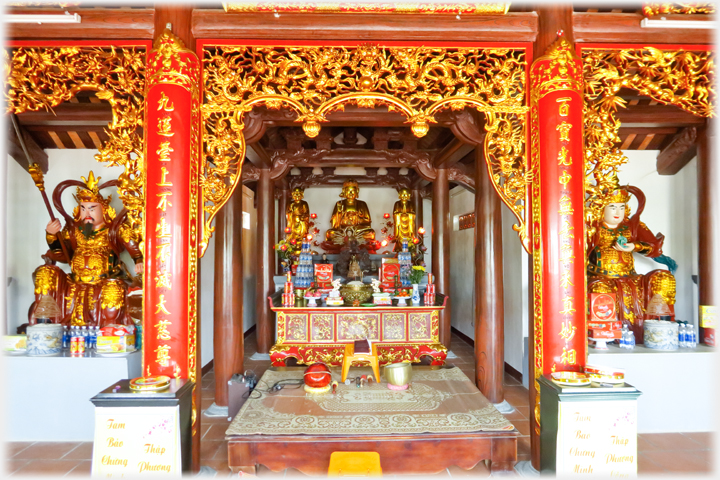 Above, the central altar, with its two side altars - shown again below
Above, the central altar, with its two side altars - shown again below
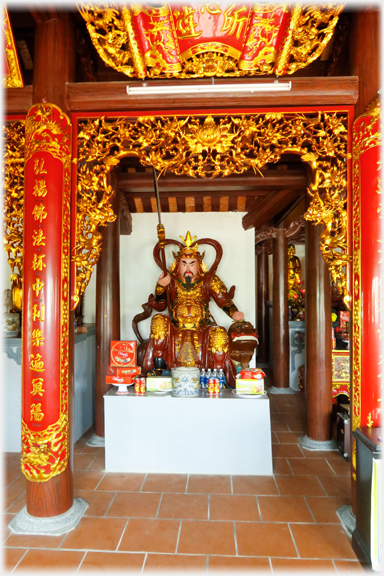
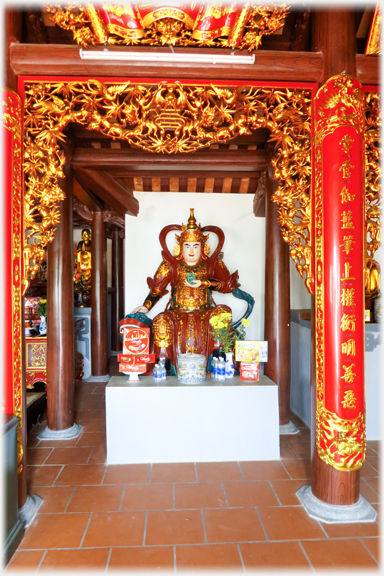 The proliferation of temples and pagodas in recent years, and the way the two are elided, so lessening their religious impact, is noticeable. Maybe after an era of, sometimes, stern secularism the contemporary mood is more fluid
Trailers...
The proliferation of temples and pagodas in recent years, and the way the two are elided, so lessening their religious impact, is noticeable. Maybe after an era of, sometimes, stern secularism the contemporary mood is more fluid
Trailers...
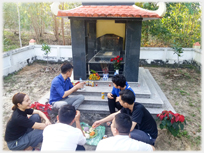 The next page
of this section moves from public places of devotion, to a family's private memorials.
The next page
of this section moves from public places of devotion, to a family's private memorials.
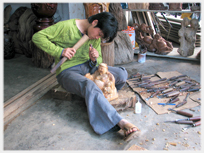 The next page
of the Mosaic Section is headed 'Ready-to-hand'.
The next page
of the Mosaic Section is headed 'Ready-to-hand'.
Or go to the contents Go to the contents of the Mosaic Section. of the Mosaic Section.

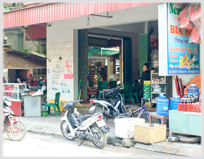 The last page had a definitely secular institution: Bà Hải's beer bar
The last page had a definitely secular institution: Bà Hải's beer bar
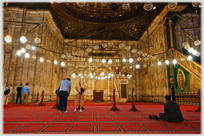 And to Cairo for a very non-secular institution
And to Cairo for a very non-secular institution
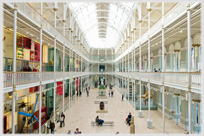 Maybe museums are the western equivalent of temples - honouring the past
Maybe museums are the western equivalent of temples - honouring the past
 ...guide to this site
...guide to this site